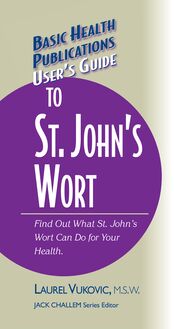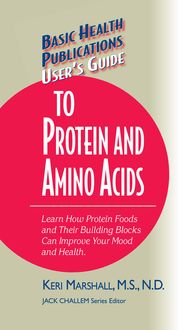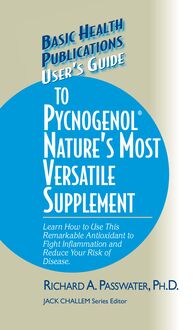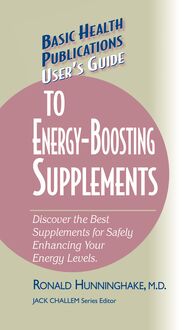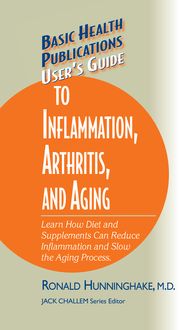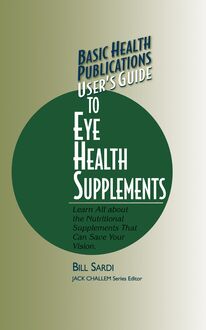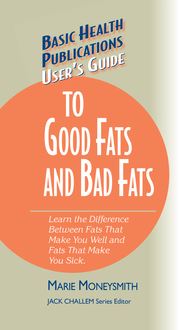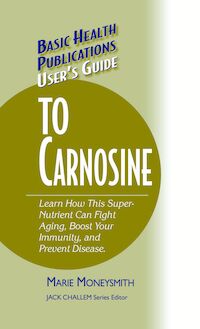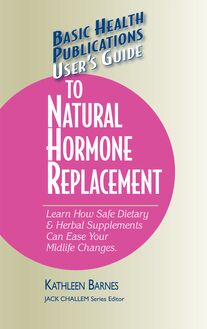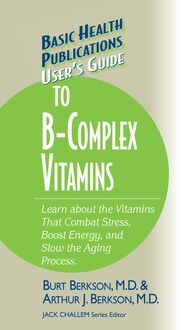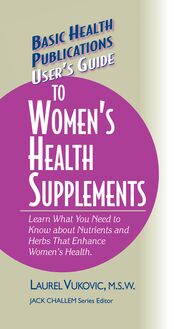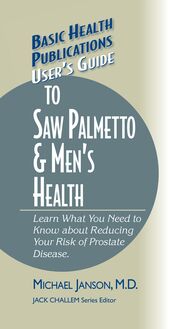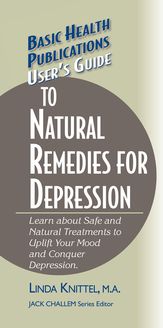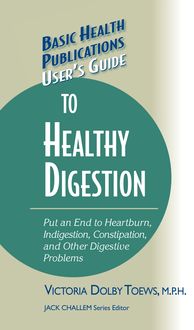User's Guide to Natural Remedies for Depression , livre ebook
47
pages
English
Ebooks
2003
Vous pourrez modifier la taille du texte de cet ouvrage
Obtenez un accès à la bibliothèque pour le consulter en ligne En savoir plus
Découvre YouScribe en t'inscrivant gratuitement
Découvre YouScribe en t'inscrivant gratuitement
47
pages
English
Ebooks
2003
Vous pourrez modifier la taille du texte de cet ouvrage
Obtenez un accès à la bibliothèque pour le consulter en ligne En savoir plus
Publié par
Date de parution
01 mars 2003
Nombre de lectures
1
EAN13
9781591206347
Langue
English
Poids de l'ouvrage
1 Mo
Publié par
Date de parution
01 mars 2003
Nombre de lectures
1
EAN13
9781591206347
Langue
English
Poids de l'ouvrage
1 Mo
The information contained in this book is based upon the research and personal and professional experiences of the author. It is not intended as a substitute for consulting with your physician or other healthcare provider. Any attempt to diagnose and treat an illness should be done under the direction of a healthcare professional.
The publisher does not advocate the use of any particular healthcare protocol but believes the information in this book should be available to the public. The publisher and author are not responsible for any adverse effects or consequences resulting from the use of the suggestions, preparations, or procedures discussed in this book. Should the reader have any questions concerning the appropriateness of any procedures or preparations mentioned, the author and the publisher strongly suggest consulting a professional healthcare advisor.
Series Editor: Jack Challem
Editor: Rowan Jacobson
Typesetter: Gary A. Rosenberg
Series Cover Designer: Mike Stromberg
Basic Health Publications User’s Guides are published by Basic Health Publications, Inc.
8200 Boulevard East
North Bergen, NJ 07047
1-800-575-8890
Copyright © 2003 by Linda Knittel, M.A.
ISBN-13: 978-1-59120-634-7
ISBN: 1-59120-046-6
All rights reserved. No part of this publication may be reproduced, stored in a retrieval system, or transmitted, in any form or by any means, electronic, mechanical, photocopying, recording, or otherwise, without the prior written consent of the copyright owner.
Printed in the United States of America
10 9 8 7 6 5 4 3 2 1
C ONTENTS
Introduction
1. What Is Depression?
2. Ruling Out Medical Causes
3. St. John’s Wort
4. S-adenosyl-L-methionine (SAMe)
5. Kava
6. 5-HTP
7. Vitamins, Minerals, and Other Nutrients
8. Melatonin
9. Light Therapy
10. Food and Depression
11. Lifestyle Choices
12. Seeking Professional Help
Conclusion
Supplement Reference Guide
Selected References
Other Books and Resources
I NTRODUCTION
D o you awake each morning feeling hopeless, irritable, and just plain sad? If so, there are two important things you should know: first, you can feel better, and second, you are not alone.
According to the American Medical Association, one in ten adult Americans will suffer from depression in any given year. That’s more than 17 million people looking for a way to ease their sadness, anxiety, and fatigue—a number that has made the pharmaceutical companies quite jolly. But natural treatments for depression are beginning to give the big drugs a run for their money. More and more people are discovering that herbs, vitamins, minerals, and lifestyle changes are powerful enough to lift depression and its symptoms without the unwanted side effects that often accompany drugs. In other words, most natural approaches to depression have safety records that blow their pharmaceutical counterparts out of the water.
If you think you or someone you know is suffering from depression, then read on, for this book will explain how to overcome depression using all-natural treatments that will not only lift your mood but also improve your overall health and well-being.
There is no denying that traditional approaches to treating depression—such as the daily use of antidepressant drugs—have helped numerous people, but these substances often cause serious side effects and can be fairly addictive. In contrast, natural treatments such as diet, herbs, vitamins, and other nutrients have shown to be equally or more effective at elevating mood and have demonstrated few side effects.
In this User’s Guide to Natural Treatments for Depression , you will learn that depression is often brought on by a combination of external influences and chemical imbalances in the brain. When these chemicals are returned to normal levels—via herbs, light therapy, diet, exercise, or supplements—one naturally feels better. Each chapter of this book is designed to address a single natural approach to treating depression and its symptoms, so you can understand the science behind each treatment and learn the proper methods and doses for its use.
Although one of the strongest appeals of these natural approaches is that they can be used without a prescription, it is important to seek the guidance of a physician or other health practitioner when beginning any treatment program. Additionally, since there are many types of mood disorders, it is recommended that you seek professional help in determining the exact nature of your condition, as well as your individual health concerns. But remember, the power to overcome your depression is in your hands. If you believe you can get well, and are willing to do a little research and make a few healthy lifestyle changes, then relief is just around the corner.
CHAPTER 1
W HAT I S D EPRESSION?
E ach day, millions of people struggle with feelings of worthlessness, sadness, and despair. Although external factors such as work, family, and finances can contribute to one’s melancholy, scientific research shows that most mood disorders—including depression—are also linked to levels of certain brain chemicals. When these chemicals are not present in sufficient quantities, or are not able to function properly, mood disturbances arise. The good news is that in most cases you can balance these chemicals by natural means, without having to resort to prescription antidepressants.
How Does Depression Differ from Just Being Sad?
Certainly everybody feels sad from time to time, but unlike occasional sadness, depression is characterized by persistent blue moods. Not only do these moods tend to interfere with major life activities such as work, family, or school, but they also have a strong negative effect on an individual’s self-esteem. Someone who is depressed often feels exhausted, hopeless, and disinterested in life in general.
Like most conditions, there are varying degrees of depressive states. Mild depression describes a condition in which one suffers from some symptoms, but is able to carry out daily responsibilities. Moderate depression occurs when symptoms prevent one from doing what needs to be done, whereas major depression exists when one’s sadness completely overwhelms the ability to cope with everyday life.
The Symptoms of Depression
1. Prolonged sadness
2. Excessive crying
3. Fatigue or difficulty sleeping
4. Loss of sex drive
5. Changes in eating patterns
6. Anxiety
7. Hopelessness
8. Irritability
9. Changes in weight
10. Suicidal thoughts
As mentioned in the Introduction, at least 17 million American adults—1 in 10—suffer from depression in any given year. Furthermore, women are twice as likely to become depressed as men. While depression is found in all age groups, it is most common in middle-aged adults.
There are several theories as to why more women are treated for depression than men. Possibly, this is due to the high stress levels women face in their conflicting roles at work and home. The constant hormonal changes that women experience are another factor. Then again, women may simply be more likely to seek help than men, thus, they appear to have higher rates of depression. The truth undoubtedly lies in a combination of all three explanations.
It also appears that some forms of depression do run in families. This is especially common of bipolar depression.
Types of Depression
There are many different levels of mood disorders, each with its own set of characteristics and symptoms. The most common forms are major depression and bipolar depression. Some additional forms of depression include cyclothymia, dysthymia, seasonal affective disorder, and postpartum depression.
Bipolar Depression
A condition, sometimes called manic-depressive illness, characterized by dramatic oscillations between feelings of depression and euphoria.
Cyclothymia is a mild form of bipolar depression that usually develops in early adult life and is characterized by frequent periods of both depression and mild elation. Dysthymia, on the other hand, is a condition of mild, constant depression that usually lasts for more than two years. Often dysthymia begins early in life and is marked by feelings of hopelessness, low self-esteem, and irritability. Seasonal affective disorder (SAD) is a type of depression that occurs during specific times of the year when light patterns are altered. Most often, individuals suffering from SAD feel depressed during the gray winter months and happy during the summer. Symptoms include fatigue, increase in appetite, difficulty concentrating, sadness, and anxiety. Postpartum depression describes a severe, prolonged period of sadness in women following the birth of a child.
Childbirth and Depression
As mentioned above, depression appears to be twice as common in women as it is in men, with its greatest incidence during the primary reproductive years—ages twenty-five to forty-five. The link between reproductive status and depressive illness appears as depression during the premenstrual phase, the perimenopausal period, and the immediate postpartum period.
Despite the fact that postpartum depression has recently made a name for itself in the popular press, this condition remains a frequently overlooked illness—despite the potentially horrific consequences. Because of the major physical, psychological, and social changes that accompany childbirth, it is certainly a major risk factor in the development of mental illness. Of the approximately four million births occurring annually in this country, nearly 40 percent involve some form of a postpartum mood disorder.
In a trial published in Psychological Medicine , researchers reviewed the outcomes of more than 35,000 deliveries. Through ninety-day interval screenings over a two-year period preceding and following each delivery, the team found a sevenfold increase in the risk of psychiatric hospitalization in the first three months after delivery. Researchers al
